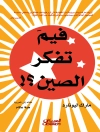Volatility in Korean Capital Markets summarizes the Korean experience of volatile capital flows, analyzes the economic consequences, evaluates the policy measures adopted, and suggests new measures for the future.
Tabela de Conteúdo
Preface Contributors Tables and Figures PART I: OVERVIEW 1. Overview of International Capital Flows; Kyuil Chung, Hail Park, and Changho Choi PART II: CAPITAL ACCOUNT LIBERALIZATION AND ITS CONSEQUENCES 2. Macroeconomic Effects of Capital Account Liberalization: the Case of Korea; Soyoung Kim, Sunghyun H. Kim, and Yunjong Wang 3. Do Capital Inflows Matter to Asset Prices? The Case of Korea; Soyoung Kim and Doo Yong Yang 4. Capital Flows in Korea after Capital Account Liberalization; Hail Park, Daeyup Lee, and Kyuil Chung PART III: POLICY RESPONSES BEFORE AND DURING THE CRISIS 5. Capital Inflows and Policy Responses: Lessons from Korea’s Experience; Kyuil Chung and Seungwon Kim 6. Dislocations in the Won-Dollar Swap Markets during the Crisis of 2007–09; Naohiko Baba and Ilhyock Shim PART IV: MACROPRUDENTIAL POLICY AFTER THE CRISIS AND INSTITUTIONAL REFORM SUGGESTION 7. Why Macroprudential Policy? Brief Overview; Valentina Bruno and Hyun Song Shin 8. Assessing Macroprudential Policies in Korea; Changho Choi 9. Mitigating Systemic Spillovers from Currency Hedging; Kyuil Chung, Hail Park, and Hyun Song Shin PART V: EPILOGUE 10. The Second Phase of Global Liquidity and Its Impact on Emerging Economies; Hyun Song Shin Index
Sobre o autor
Naohiko Baba, Goldman Sachs Japan, Japan Valentina Bruno, American University Changho Choi , Bank of Korea Kyuil Chung, Bank of Korea Daeyup Lee, Bank of Korea Seungwon Kim, Bank of Korea Soyoung Kim, Seoul National University Sunghyun H. Kim, Sungkyunkwan University Hail Park, Bank of Korea Ilhyock Shim, Bank for International Settlements Hyun Song Shin, Princeton University, USA Yunjong Wang, SK SUPEX Council Doo Yong Yang, Kyung Hee University












